
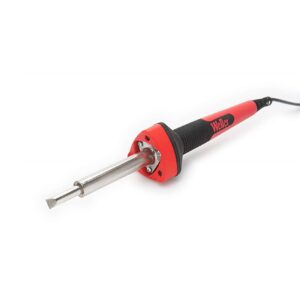
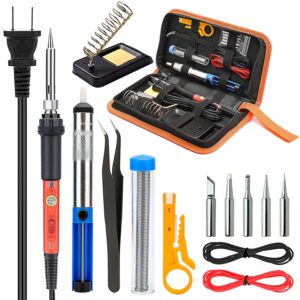
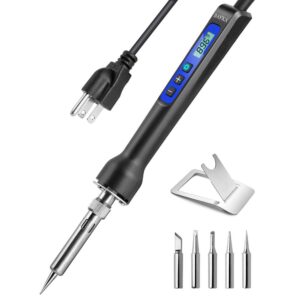
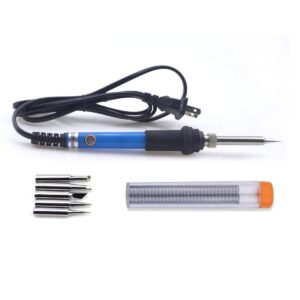
Choose the Best Soldering Iron for Guitar
[modalsurvey id=”1029450543″ style=”flat”]Customer’s Choice: the Best Rated Soldering Irons for Guitar
[survey_answers id=”1029450543″ style=”plain” data=”score”] users answered this survey. Please help us improve this review!
[survey_answers id=”1029450543″ style=”piechart” legend=”true”]
So, are you on the hunt for the high-quality soldering iron to patch a guitar cable wire but unsure whether to invest in? The soldering iron is not only used for jewelry and appliances. And guitar players profit immensely from using this device to either update guitar pickups or fix other parts, or both.
A top-notch soldering gun/iron can save you a lot of time and effort when you try to repair your guitar. Mainly because you no longer need to purchase a brand new guitar or head to a nearby repair shop (unless your guitar is seriously damaged).
If you’re changing the pots or updating the pickups in the instrument, you’re going to need a decent soldering iron. Repairing the guitar parts may be really satisfying, but it’s not the only cool thing to possess a soldering iron.
The following guide is based on expert reviews and unbiased user feedback. The result is top 5 soldering irons for guitar electronics. Thanks to these tools, you will be able to repair your musical instrument almost effortlessly. Make sure to check the comparison table with the major specs of some soldering irons.
Anbes Soldering Iron Kit for Guitar Wiring
 The Anbes kit includes one of the strongest soldering irons on the market as it has everything you need for different soldering work. The Anbes soldering iron is a 14-in-1 soldering iron package.
The Anbes kit includes one of the strongest soldering irons on the market as it has everything you need for different soldering work. The Anbes soldering iron is a 14-in-1 soldering iron package.
Pros
- Budget-friendly
- The stand is made of steel
- Includes all the accessories required for advanced soldering
- Heats up fast
- Includes a leather carry bag
Cons
- The whole body of the iron becomes hot, not just the tip – be careful!
- Not good if you need to work it for hours
The highlight of the Anbes kit is the comfortable soldering handstand, which blends well with the hand and makes it easier to solder fragile parts. It can change the temperature from 482F to 842F along with 60 watts of heat production resulting in fast heat up, saving energy. The de-soldering device acts as a high-pressure vacuum. It is also shipped with adjustable tips, which are simple to use. More about Anbes soldering irons here.
Weller SP40NUS LED Soldering Iron – the best for the LED lighting!
 The Weller SP40NUS iron is a high-performance device and can run at temperatures as high as 900F. This device is fitted with a 5 mm high-temperature long-life LED valued at 25 lumens per sq. ft. to improve superior soldering precision.
The Weller SP40NUS iron is a high-performance device and can run at temperatures as high as 900F. This device is fitted with a 5 mm high-temperature long-life LED valued at 25 lumens per sq. ft. to improve superior soldering precision.
The triangular-shaped handle improves the specific power of the edge, and the circular handles allow fast rotating of the end. So, there are no risks of dropping your hands when using. It’s pretty quick to adjust ideas.
Pros
- 25-Lumen LED lighting to work in poorly lit rooms
- Durable – long life service is guaranteed
- Easy to change the tips
- Lightweight
- Comfy ribbed handle
- Heats up to 9000F
- Accurate application
Cons
- May overheat quickly
- Slowly heats up
- Only one extra tip is included
Weller’s medium-duty market soldering iron provides good durability and protection when soldering. It comes with a state-of-the-art LED tech to let you work at night. There are 3 LEDs in its design. They express excellent precision and illumination. This 40W soldering iron efficiently provides light for a specific use.
Yome Soldering Iron 14-in-1 Kit – the best for beginners!
 The Yome kit is simple to use and is ideal for beginners. If you like DIY projects or need to patch tiny pieces, this iron is the perfect option. The temperature adjustment dial is installed into the handle of the Yome device. You can reduce heat by turning the in-built dial.
The Yome kit is simple to use and is ideal for beginners. If you like DIY projects or need to patch tiny pieces, this iron is the perfect option. The temperature adjustment dial is installed into the handle of the Yome device. You can reduce heat by turning the in-built dial.
The temperature sensor is at your disposal – with only one touch, you can raise the heated pressure and start doing the job faster. There is a 30% improvement in the content on the five soldering tips offered for longer life.
This 14-in-1 kit by Yome includes an iron with the option of adjustable temperature, a desoldering pump, a wire strip cutter, a solid stand, tweezers, 5 different tips and 2 electronic wires. All these things are delivered in a sturdy PU carry bag.
[tds_info]Tips for users: this iron warms up easily, so please pick the correct temperature before using it. Capable to work for long hours at high temperatures the device can get the lifespan reduced.[/tds_info]
Pros
- The adjustable temperature control – the dial is located in the handle
- Budget-friendly
- Can easily become your first soldering iron
- Easy application when soldering the guitar’s wires
Cons
- Doesn’t include a sponge – instead, it has a thin paper piece
- It looks a bit flimsy
- A default wire stripper can strip only thin wires
The tips are of good quality; the iron is very strong and works well for every soldering function. It has temperature monitoring and an on-off turn, which is more than many of the more costly labels may claim.
BAYKA 60W 110-120V Soldering Iron – the best for functions!
 Get one of the most multifunctional soldering irons – the BAYKA 60W 110-120V device. It has 5 precise tips and adjustable temperature control with on/off switch. Also, you may benefit from using its LCD, a durable stand, auto-shut setting, etc.
Get one of the most multifunctional soldering irons – the BAYKA 60W 110-120V device. It has 5 precise tips and adjustable temperature control with on/off switch. Also, you may benefit from using its LCD, a durable stand, auto-shut setting, etc.
Pros
- Multi-functional
- Portable
- Ergonomic handle
- 10-minute auto-sleep timer
- Blue LED display
- Heats up to the max within 30 secs
Cons
- Only a couple of control buttons are responsible for all features
- Pricey
The degree can be adjusted with the help of two control buttons. It’s self-sleep features that help with overheating issues. The Bayka iron is recognized for its portability that is why it’s easier to set up, store and transport.
GLE2016 Electric Soldering Iron Kit– the best for quality!
 The GLE2016 device is constructed of the iron plated tip and stainless steel, guaranteeing the consistency of the materials and the safety and durability of the product.
The GLE2016 device is constructed of the iron plated tip and stainless steel, guaranteeing the consistency of the materials and the safety and durability of the product.
Pros
- Premium materials
- Non-slip rubberized and insulated handle
- Simple to use
- Lightweight and portable
- Durable
- Adjustable temperature option
Cons
- Not many options
- It is not compatible with many metals
- Doesn’t include a stand
Apart from providing an adjustable temperature, this iron heats quicker than most soldering irons in only 2 minutes or less. The heart of the ceramic heater also makes it more reliable during the work. It’s simple to use and can be worked with one side.
Tips for Soldering Guitar Cables
All the above-mentioned soldering irons are mostly classic models. That is why the buying guide doesn’t focus on different types of soldering irons. Instead, check the major features to look for in classic soldering irons for guitar repair.
Shape and size of the iron’s tip
The scale and shape of the soldering gun define the sort of job you will conduct. Tips are coming in variety to super good. Most devices have compatible and extra tips these days. Pick the iron according to the specs of our musical instrument.
Wattage
Wattage is the sum of heat that can be generated by a soldering iron. However, keep in mind that more electric power is not necessarily a viable choice. It’s not a real measure of the strength of the iron. Soldering irons are typically found between 20 and 60 watts.
A soldering iron within 5 to 25 watts is suitable for thin wires, circuit boards and components. Tools of 25 to 40 watts can be used to weld various guitar parts, including wires, volume jacks and input jacks. Finally, 40 and more watt irons are ideal for wider sections and more audio cables.
Temperature control
Today, the top-notch irons come with temperature regulation. It is modified and tracked as appropriate. It is safer to buy a temperature regulation dependent on soldering iron. Mainly as it is able to change the temperature and drop as well as turn the heat up and hold the temperature stable.
Portability
The portability of such devices is dependent on how you plan to use it and the amount of power it will provide. If you just get to grips with tiny ventures, perhaps cordless versions might be the best choice for you. And, for larger ventures, it would be easier to go for a corded model. Otherwise, you will have to fill the tank every 10 minutes until it has run out of fuel (e.g. butane).
Heating time
It’s really critical how long you have to wait to begin soldering. In this scenario, you will have the maximum time to sit for three minutes. This provides flexibility and increases the standard of service.
LED lighting
Such irons provide illumination such that they can be easily noticeable when welding the sensitive areas. It is a valuable function, particularly for newbies or when repairing complicated circuit boards.
Temperature control
Advertised as a temperature controller, these units only regulate the wattage sent to the device. Typically, the temperature at the tip is continuously rising, and cannot be pleasant when operating. When buying the iron with a temperature sensor, it is often safer to choose a better performing product while welding fragile electronics.
What accessories should a soldering iron kit include?
- A few different tips for replacement and various jobs;
- A brass coil or cleaning sponge (better than a piece of sandpaper);
- A metal stand;
- Different tools that can be useful – a wire stripper, extra wires, etc;
Final thoughts
The review covers 5 popular devices in the category of the best soldering irons for guitar repair. These irons are effective, durable and affordable – pick the device, according to the preferred functions and soldering jobs. Remember there is no need to invest in a pricey device if you do occasional guitar repairs. However, if you are an enthusiastic DIYer, then consider buying the multi-functional device designed for heavy-duty jobs.
If you are one of those enthusiasts who prefer to repair his or her musical instruments manually, you won’t do without a good soldering iron. In this particular review, I’d like to focus on the best models ideal for repairing the guitar’s electronics and cords.
For instance, ANBES soldering station will serve you as a great tool. It has an adjustable wattage option – that is why it will be perfect for convenient and versatile tasks. If you are searching for a workhorse that may cope with complicated and easy tasks, the following picks will be awesome for you.
My advice for guitar repair – 5 best soldering irons:
- ANBES is a 60-Watt, 14-in-1 instrument that can heat up to 200℃-4500C;
- Weller SP40NUS is a 40-Watt LED tech tool with an easy tip change;
- Yome is another 60 Watt tool with on/off switch;
- BAYKA has a nice LCD display – this tool can heat up to 480℃;
- GLE2016 is also my pick because of a very ergonomic non-slip soft rubber handle;
How to buy a soldering iron for guitars?
When choosing a soldering iron to repair a guitar, you should pay attention to such criteria:
- An instrument’s handle must be protected from any overheating cases. In this case, the rubber covered handle made of wood has the best performance. Plastic handles heat up more quickly, which hinders smooth operation, and ebonite handles are heavier than wooden grips, which also reduces usability, especially when soldering circuit boards and electronics;
- The iron’s tip should be made of copper, it is easier to process and clean from flux. Pick the set with adjustable tips with different shapes included. It is also good if it is possible to replace the tip or adjust its length. It is considered that a straight soldering iron’s tip is the most convenient for repairing a guitar, especially if you are a beginner;
- The instrument’s power cord should be flexible, long and with the double insulation layer;
- Pay attention to the equipment. Typically, good quality soldering irons are equipped with a case, stand, mat, sponge, etc.;
- We recommend choosing a soldering iron with a temperature adjusting option – it will allow you to adjust the temperature of the iron’s tip for different tasks;
Pick a power soldering station with adjustable tips and temperature modes, and you will find a great tool to repair a guitar. Please share your experience with this delicate task. How do you solve this problem? What soldering irons do you use?

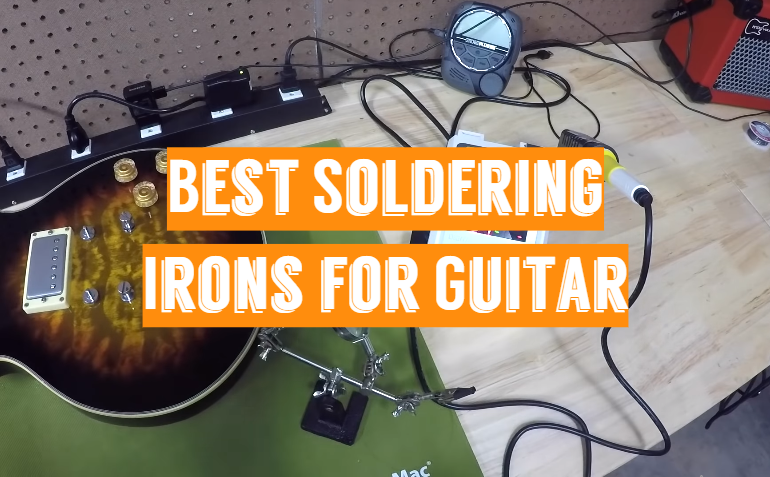
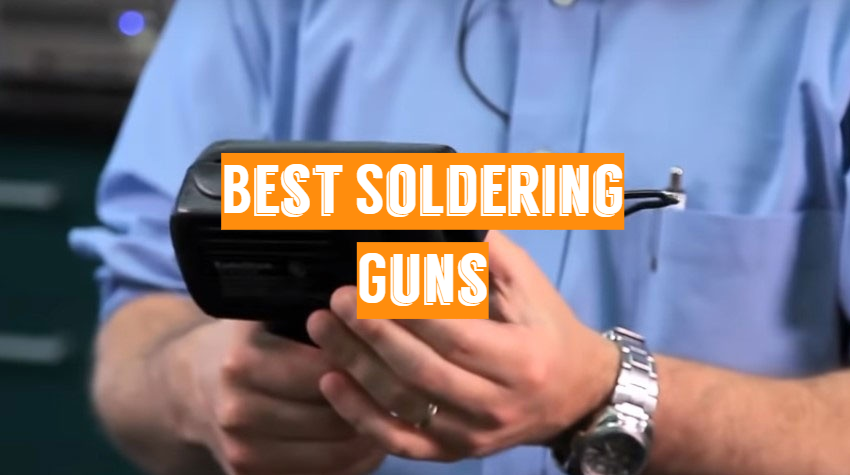
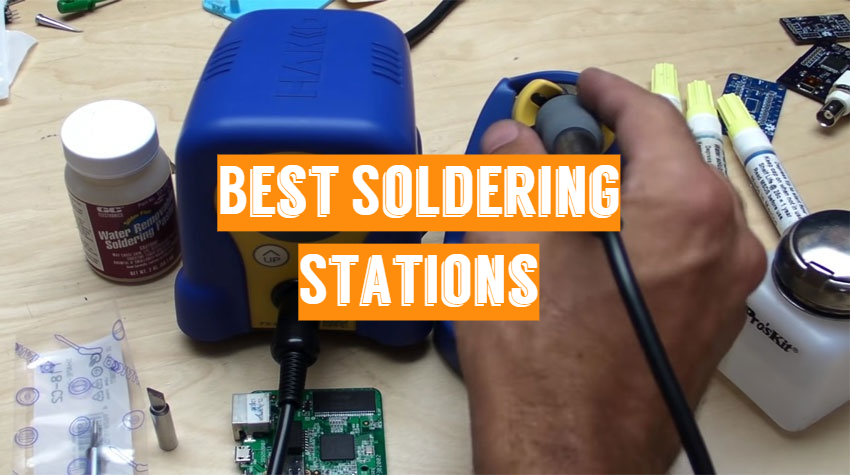
As a kid, I had a wood burning kit which is basically a 30W soldering iron. I was talking to my cousin while working, and got distracted. I went to grab the soldering iron, and I literally picked it up like a pen… right on the hot metal part. Yeahhh, I never made that mistake again.
Also, i don’t think you can get the output jack backwards. If you reverse it, the signal phase will just invert. (This will have no impact on sound in this case.)
Hello, Jason! Thanks for sharing your experience.
What could be better than ANBES? It’s a 14-in-1 tool that can do wonders in the right hands. Been using it for a while with great success and I wouldn’t go back to my old Yome which wasn’t as good.